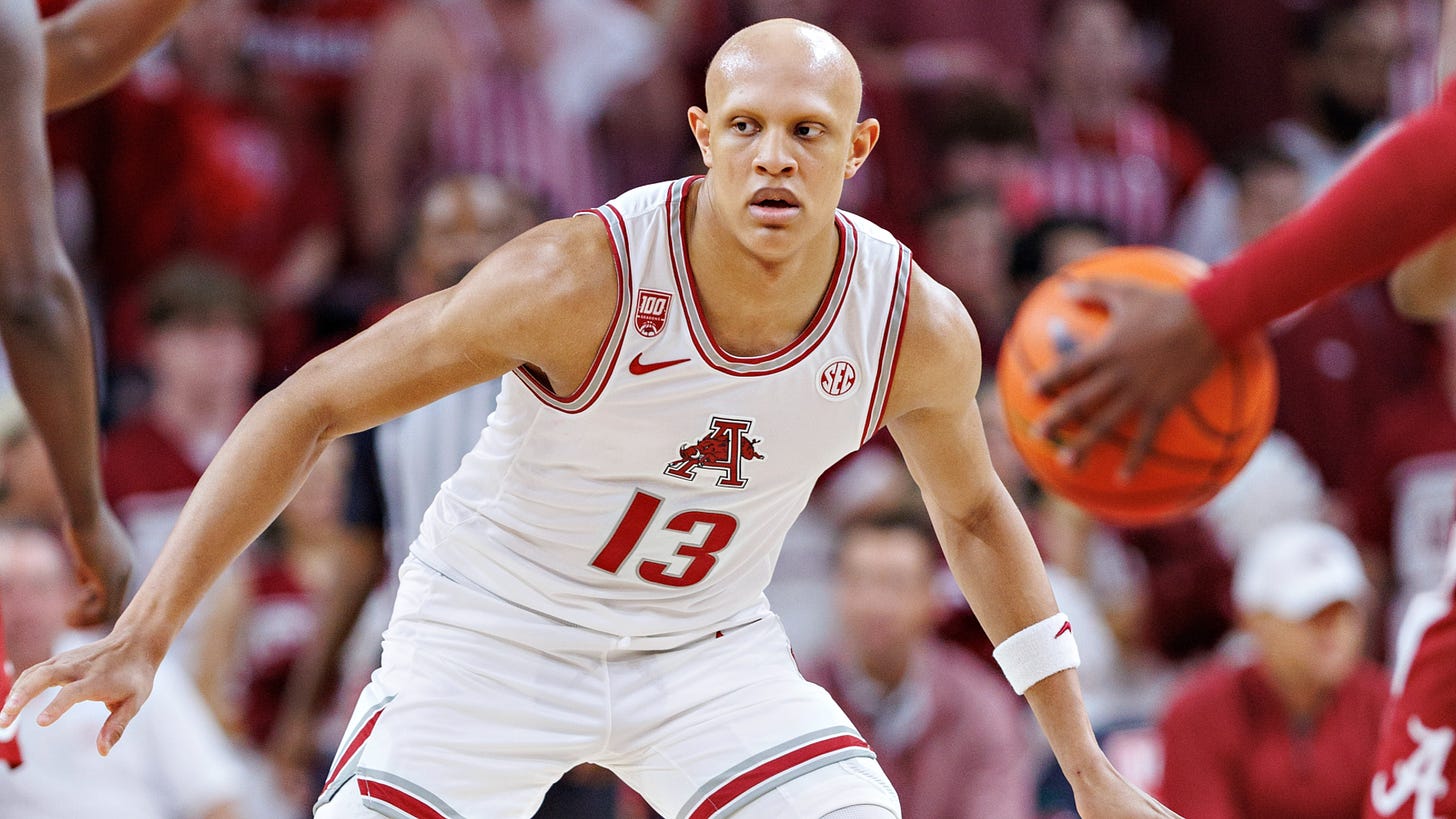Jordan Walsh: 2023 NBA Draft Scouting Report
A supremely gifted defender, Walsh relies on intangibles to make a two-way impact. Is that enough to help a team at the NBA level?
Earlier this week, I wrote about the reasons that there’s one archetype that really hurts me: raw, athletic, non-shooting wings who project as role players.
It’s one of the most important strides I hope to make this year as a scout, and one of the vital archetypes to nail based on the trajectory of the NBA. I’ve long believed that it’s an archetype that isn’t built for playoff success, and while that’s true, there are still guys who can (and do) improve as shooters or find value as role players nonetheless.
Throughout this week, I’ll be looking at three of the tougher prospects in this class who fit that mold — Tennessee’s Julian Phillips, Arkansas’ Jordan Walsh, and Bilal Coulibaly of Metropolitans 92 — in depth. Their scouting reports will be done and I’ll come to conclusions on their strengths and skill level, then I’ll examine them through the lens of four questions to figure out how to more accurately rank them:
How confident am I in their projectability to improve as a shooter?
Do they have other offensive skills that can compensate to give them value during the regular season?
Are there elite intangibles (motor, work ethic, character) that make them the right guy to buy in on regardless of the shot?
What are other trusted scouts seeing in these guys that can try to swing me to buy in on them?
I had a lot of friends in the scouting industry who were really high on Jordan Walsh coming out of high school. It’s rare to find a guy with a near 7’0” wingspan who is as engaged and smart on the defensive end while also having functional basketball IQ on offense. Walsh was the master of intangibles, a winning player who made winning plays. He didn’t need to score 15 points to be the most dominant player on the floor and to help his team achieve their result.
It’s hard to call Walsh’s season at Arkansas an overt success or a troubling display. It’s somewhere in between. The Razorbacks, for all their top-tier talent, lacked floor spacing. Everyone got exposed as a result, though Walsh’s role as a non-shooter became actively harmful to whatever spacing they were trying to create. He would be absent during big moments and only played about 24 minutes a game.
Yet the Razorbacks were clearly better with Walsh on the floor. Analytically, his minutes rate out as some of the most positive on the team. He makes winning plays, creates extra possession, is a legitimate connective passer, and knows how to combat some of his limitations.
Walsh’s pro outlook is going to be linked to his shooting ability in some regard. It’s the safety net that all wings need if they’re going to play off-ball. And while Walsh can rebound-and-run and has some intriguing traits as a passer, he doesn’t have anywhere near the scoring punch to command a major creative role. Not even close.
While I’m generally averse to these non-shooting wings, Walsh brings so many intangibles to the table that it’s difficult to ignore the possibility that he could be the one guy who outperforms his draft position and makes himself into a winning player regardless of what the shooting metrics indicate.



